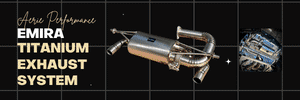OP
LotusRising
Well-known member
- Thread Starter
- Thread starter
- #21
The key issue for this age of engine is likely to be the temperature limits on the pistons, head and exhaust manifold, the more power you are producing the higher the component temperatures. If these limits are raised the next would be the inertial forces on the moving components, which increase with the square of the speed so they get higher quite quickly. It will also get to the valve train limits when the valve springs aren’t strong enough to overcome the increased valve inertia and the valves don’t
Exactly what I was looking for. I really appreciate your reply.






